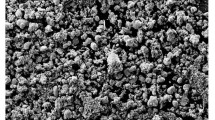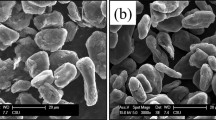Abstract
This study investigated the effects of the direct vacuum carburizing process on sinterability, mechanical, and wear properties applied to the composites produced via the powder metallurgy (PM) method and containing of Fe–C–Cu. Direct sintering (DS), sintering + vacuum carburizing (S + VC), and direct vacuum carburizing (DVC) heat treatment processes were applied to the samples, respectively, and these processes were compared in terms of the results of the hardness measurements, three-point bending tests, and wear tests applied after the treatments. The material characterization results were interpreted via field emission scanning electron microscopy (FESEM) and energy-dispersive X-ray spectroscopy (EDS) analyses. It was found that the samples’ hardness and bending strength increased with the graphite and copper ratio in the composite material, and copper also increased the ductility. Wear split and micro-cracks were observed on worn surfaces with increase in hardness. After the sintering process, necks had formed between the powder grains in the DVC-treated samples and through the DVC process, greater carbon diffusion depth was achieved in the samples. The highest hardness increase was observed in the surface areas of the samples subjected to the DVC heat treatment, whereas the lowest increase was seen in the central zones of the DVC samples. The highest bending strength values were determined in the S + VC samples and the lowest in the DVC samples. The wear test results revealed that the highest volume loss and friction coefficient had occurred in the DS samples, whereas the S + VC and DVC treatments had significantly increased the wear resistance.










Similar content being viewed by others
References
Faris, M.; Suhaib, M.: Introduction to powder metallurgy: a review. IAR J. Eng. Technol. 2(3), 1–7 (2021)
Akhtar, S.; Saad, M.; Misbah, M.R.; Sati, M.C.: Recent advancements in powder metallurgy: a review. Mater. Today Proc. 5, 18649–18655 (2018)
Köksal, N.S.; Taşan, F.: Changes in mechanical properties of ferrous based P/M materials with Cu and Ni addition, C.B.U. J. Sci. 4(1), 55–64 (2008)
Narasimhan, K.S.: Sintering of powder mixtures and growth of ferrous powder metallurgy. Mater. Chem. Phys. 67, 56–65 (2001)
Yılmaz, N.; Varol, R.: Investigation of effect of copper ratio on drillability and mechanical properties of ferrous-based structural PM materials. J. Fac. Eng. Arch. Gazi Univ. 26(1), 161–171 (2011)
Hryha, E.; Nyborg, L.; Malas, A.; Wiberg, S.; Berg, S.: Carbon control in PM sintering: industrial applications and experience. Powder Metall. 56(1), 5–10 (2013)
Liew, W.Y.; Ling, J.L.; Siambun, N.J.: Sliding wear behaviour of steel carburized using Na2CO3-NaCl. MATEC Web Conf. 87, 1–6 (2017)
Gao, F.; Zong, X.; Tian, L.; Quan, S.: Microstructure and mechanical properties of low temperature carburizing layer on AISI 440C martensitic stainless steel. Mater. Express 10(6), 841–847 (2020)
Erdogan, M.; Tekeli, S.; Pamuk, Ö.; Erkan, A.: Surface carburised AISI 8620 steel with dual phase core microstructure. Mater. Sci. Technol. 18(8), 840–844 (2002)
Özdeşlik, M.; Sindel, L.; Keskin, S.: Low pressure carburizing and high pressure gas quenching. In: Union of Chambers of Turkish Engineers and Architects Chamber of Metallurgical and Materials Engineers, pp. 31–36 (2016)
German, R.M.: Powder Metallurgy and Particulate Materials Processing. Princeton, New Jersey (2005)
Çelik, E.; Güven Gök, M.; Çelik, Ö.: The effect of sintering temperature on cutting tools produced by powder metallurgy method. In: 13th International Materials Symposium (IMSP’2010), pp. 1527–1534 (2010)
Widanka, K.: Effect of interconnected porosity on carbon diffusion depth in vacuum carburising process of iron compacts. Powder Metall. 5(4), 318–322 (2010)
Li, W., et al.: Effect of vacuum carburizing on surface properties and microstructure of a tungsten heavy alloy. Mater. Res. Express 1–6 (2020)
ASM Metals Handbook.: Powder Metal Technologies and Applications, vol. 7, p. 1146. ASM International, USA (1998)
Erden, M.A.; Odabaşı, Ç.; Ferik, F.; Kuyupınar, Ö.: Investigation of the effect of copper addition on the microstructure and mechanical properties of unalloyed steel produced by powder metallurgy. J. Adv. Technol. Sci. 7(1), 68–74 (2018)
Höganäs, A.B.: Machining Guidelines Höganäs Handbook for Sintered Components. Sweden (2004)
Uzun, H.; Kılıç, İ: Fracture toughness, hardness and microstructural characterization of iron-based P/M parts. SAU Fen Bilimleri Enstitüsü Dergisi 6, 76–83 (2002)
Dong, X.; Hu, J.; Wang, H.; Liu, S.; Guo, Z.: A study on carbon concentration distribution and microstructure of P/M materials prepared by carbusintering. J. Mater. Process. Technol. 209(8), 3776–3782 (2009)
Üllen, B. N., Ersoy, M.: The effect of different heat treatment processes on the wear behavior of powder metal gears. In: 16th International Materials Symposium (IMSP'2016), pp. 1696–1703 (2016)
Çivi, C.; Atik, E.: Effect of the sintering temperature to mechanical properties of Fe based copper and graphite containing materials Celal Bayar University. J. Sci. 13(2), 467–473 (2017)
Savrai, R.A.; Skorynina, P.A.; Makarov, A.V.; Osintseva, A.L.: Structure and surface properties of metastable austenitic steel subjected to liquid carburizing at a reduced temperature. Phys. Met. Metall. 121(1), 65–71 (2020)
Kusmanov, S.A.; Tambovskii, I.V.; Korableva, S.S.; Belkin, P.N.: Steel surface modification by cathodic carburizing and anodic polishing under conditions of electrolytic plasma. Surf. Eng. Appl. Electrochem. 56(5), 553–560 (2020)
Palavar, O.; Özyürek, D.; Kalyon, A.: Artificial neural network prediction of aging effects on the wear behavior of IN706 superalloy. Mater. Des. 82, 164–172 (2015)
Kaplan, Y.; Gülsün, M.; Aksöz, S.: Formation of boride layers on a commercially pure Ti surface produced via powder metallurgy. Int. J. Mater. Res. 112(4), 303–307 (2021)
Jahanmir, S.; Suh, N.P.; Abrahamson, E.P.: The delamination theory of wear and the wear of a composite surface. Wear 32(1), 33–49 (1975)
Suh, N.P.: The delamination theory of wear. Wear 25(1), 111–124 (1973)
Tekeli, S.; Güral, A.; Özyürek, D.: Dry sliding wear behavior of low carbon dual phase powder metallurgy steels. Mater. Des. 28(5), 1685–1688 (2007)
Kaplan, Y.; Aksöz, S.; Ada, H.; İnce, E.; Özsoy, S.: The effect of aging processes on tribo-metallurgy properties of al based ternary alloys product by P/M technique. Sci. Sinter. 52(4), 445–456 (2020)
Acknowledgements
In this study, we would like to thank the firm “DÖKSAN Heat Treatment and R&D Center” for its contributions in the application of vacuum carburizing and sintering heat treatments.
Funding
The authors did not receive support from any organization for the submitted work.
Author information
Authors and Affiliations
Contributions
OP was involved in conceptualization, methodology, investigation, resources, formal analysis, writing—original draft, data curation; YK helped in investigation, writing—original draft, formal analysis, data curation; ET contributed to investigation, writing—original draft, formal analysis; SA was involved in conceptualization, methodology, investigation, resources, formal analysis.
Corresponding author
Ethics declarations
Conflict of interest
All authors certify that they have no affiliations with or involvement in any organization or entity with any financial interest or non-financial interest in the subject matter or materials discussed in this manuscript.
Rights and permissions
About this article
Cite this article
Pamuk, O., Kaplan, Y., Tan, E. et al. The Effect of Vacuum Carburizing on the Mechanical and Wear Properties of Fe–C–Cu Composite Materials Produced via Powder Metallurgy. Arab J Sci Eng 47, 16305–16317 (2022). https://doi.org/10.1007/s13369-022-06875-6
Received:
Accepted:
Published:
Issue Date:
DOI: https://doi.org/10.1007/s13369-022-06875-6




